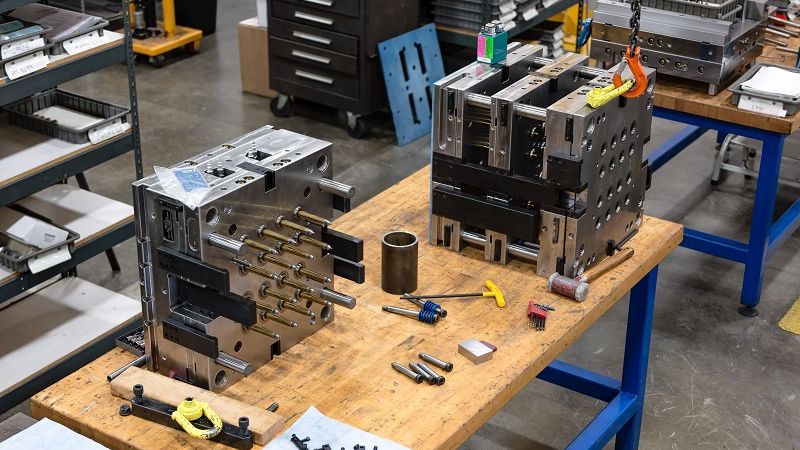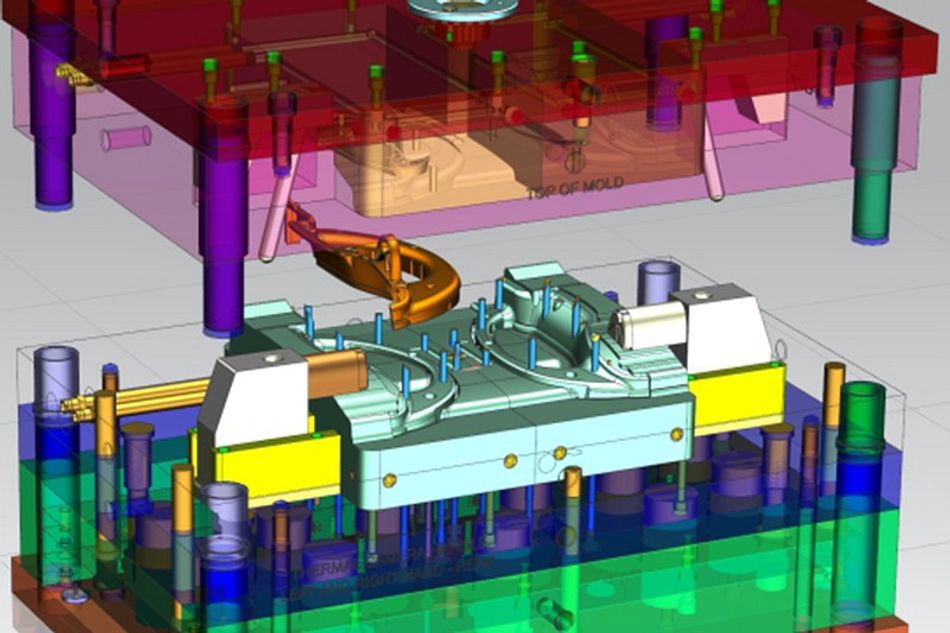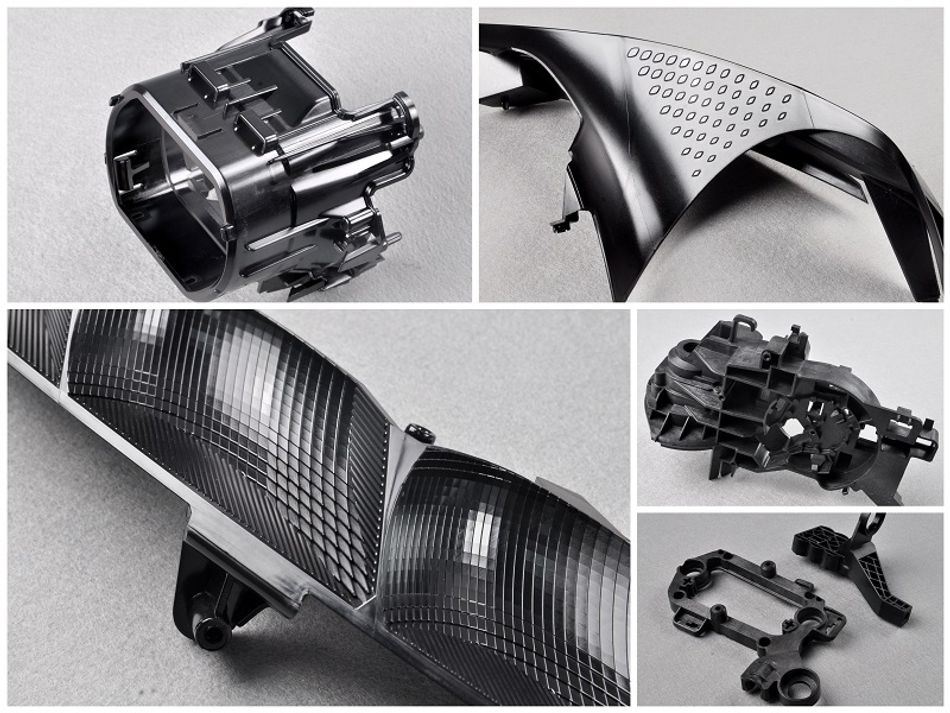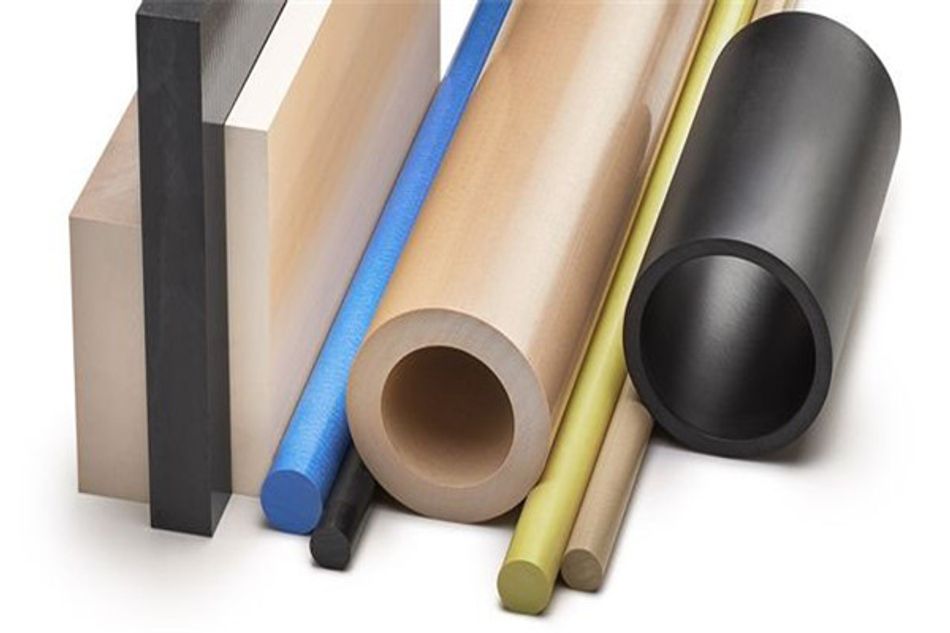Tips for Injection Molding with High-Temperature Plastics
Injection molding with high-temperature plastics can be time-saving, resource-efficient, and preferable in terms of labor, quality, and what can be achieved

rapid tooling services
The engineering and manufacturing sectors have made strides today. Technologies that were a mere concept or were economically unsound to use largescale have now become common in our industries. Metal fabrication has benefited from 3D concepts such as rapid prototyping and the use of computer-aided design (CAD) and computer-aided manufacturing (CAM) tools and software.
However, it has become increasingly cost-effective to switch from heavyweight metals to light plastics with high heat resistance. Because these plastics have a high melting point, manufacturers now prefer using plastic designs as they also come with improved thermal properties and enhanced physical and mechanical properties.

Done right, injection molding with high-temperature plastics can be time-saving, resource-efficient, and preferable in terms of labor, quality, and what can be achieved. Since these high-temperature melt-processable thermoplastics are not vulnerable to corrosion like metals and do not sacrifice their atomic properties under high heat, designing unique prototypes and end products is now a reality. It's impossible to imagine how much can be achieved using this technology right now.
Typically, the structural capabilities of these high-temperature plastics service at temperatures exceeding 150°C in the long haul, while short-term uses can service at a steady temperature of 250°C.
Common High-Temperature Plastics
Plastics with high resistance to heat have a wide range of applications in the engineering and manufacturing sectors. They are also known by other terms such as "high performance”, “engineering polymers”, “commodity”, or “standard” plastics, depending on the application. They have varied chemical resistance and electrical properties, strength, and wear resistance. These plastics have slowly crept into other industries, and soon they might be running the show.
The most-common high-temperature plastics include;
Vespel ®
This non-melting polyamide can take in highs of 300° C (572° F) with its thermal and mechanical properties intact. Vespel has found a considerable market in industrial machinery, automotive industry, aerospace (jet engines), and the list continues.
Torlon® (Polyamidep-imide)
Torlon is an ideal and effective alternative to metals with exceptional long-term strength and stiffness reaching 260° C. It is also resistant to acids, chemicals, creep, wear and tear.
PEEK (Polyether Ether Ketone)
In short durations, PEEK can endure temperature highs of up to 310°C and has an impressive melting point stretching beyond 371°C. Aside from car transmission components and aircraft exteriors, PEEK is also a regular among high-tech medical devices. Its compatibility with CNC machining and ease of machining through injection molding makes it an affordable option for most manufacturers.
ULTEM® (Polyetherimide, PEI)
This amorphous thermoplastic has been in the market for over 35 years. Its melting point of 219°C and a servicing temperature at a max continuous of 170°C makes it archetypal in designing circuit boards, airplane seat covers, fire blockers, and equipment for food sterilization. PEI does not cave in the presence of coolants or fuels but can crack once exposed to polar chlorinated solvents.
Celazole PBI
This is yet another high-temperature plastic revolutionizing the telecommunications space. It has an impressive compressive strength with heat deflection temperatures reaching 427° C (800° F). It is also efficient in the aerospace and semiconductor industries.

Other High Resistant Plastics
- Noryl (polyphenylene oxide (PPO) and polystyrene (PS))
- Rulon (various reinforced PTFE compounds)
- Polydicyclopentadiene (pDCPD)
Considerations
Matching the right plastic to its ideal application is just one side of the coin. Engineers and manufacturers should also remember other considerations while machining through injection molding using high-temperature plastics.
Include Heat Transfer Channels
Manufacturers stand to lose lots of money if heating and cooling are not done right. Since your mold needs to be cool enough (approximately 95% of your cycle time) before ejection and hot enough before injection, the right heat-transfer channels will go a long way to improve efficiency in minimal time. Incorporate equidistant heat-transfer channels into your mold design, thus exposing each cavity to equal levels of heating and cooling fluid. Remember that the cooling rate will significantly affect the part's dimensions and properties.
Use Thermal Pins
To achieve precise measurements in the final design, you need to do way more than just include heat transfer channels. You'll need other ways of controlling the temperature throughout the process. Losing control of temperatures will have drastic effects on the end product, such as warping, shrinkage, and stress-formation in the material. Thermal pin technology helps in all that, plus it also leads to increased yields and decreased cooling time.
Thermal pins have been used for around 40 years to quickly and efficiently remove heat from parts, thus increasing production. Thermal pin technology is now commonplace in the extrusion-molding, blow-molding, and thermoforming industries.
Select the Right Mold Material
Achieving perfect conditions in mold temperature for the ideal final product wouldn't be possible if the mold material could not withstand the heat. Your mold material should withstand high temperatures without compromising on cost. Moreover, the mold material should strike a balance between abrasion resistance and machinability. High-volume production runs may need high-temperature-resistant molds such as high-strength steels. Prototyping projects can do with more cost-effective tooling molds such as aluminum ones.
If the mold material is susceptible to high temperatures, it could bring about high replication of the cavity surface and increased flow resistance. Plastic injection at low pressure will most certainly stain the molds known as gate stains. We want the appropriate material to avoid these hitches.

Uniform Wall Thickness
If your initial plastic design has non-uniform walls, the final product may be warped, reducing efficiency. Unless the project requires a thickness of varying degrees, always ensure uniformity throughout the walls. Uniformity in the wall thickness will also have a ripple effect on the speed and cost of manufacturing. Should you need to make varying wall thickness, make the transition as smooth as can be to ensure an even flow of the material inside the cavity. Remember to add a generous radius to the rounded corners as such parts are generally more economical and easier to produce.
Several factors will determine the minimum wall thickness, including the flow behavior of the resin, structural requirements, and the size and geometry of the part. That said, an experienced injection molder and a skilled design engineer will help you arrive at the most suitable part’s design and material selection.
Draft Angle
Adding a draft angle is a critical stage in injection molding and especially helps ease ejection. Without a draft angle, the surface friction will cause scratches or gouges to appear, which scraps the texture, leading to several rejected parts. Alternatively, completing the machining process without adding the draft angle may cause vacuum formation, which may cause the design to either break, bend, or warp as it is being pushed out. This would also require more force, an unnecessary waste of time and money.
When considering the draft angle, a safe place to start would be one degree of draft per one inch of cavity depth. However, this won't cut across the board and may vary depending on the material used, wall thickness, shrink rate, and the intended finish or texture.
Recommended reading: 4 Tips for Reducing Tool Deflection in CNC Machining
Conclusion
Estimates show that the global high-temperature plastic market will surpass $21.1 billion by 2027. This is a forecasted CAGR of 5% over the seven years starting from 2020. There is a growing market for temperature-resistant plastics. Manufacturers and engineers can achieve immense cost savings if the right conditions are used.
We are at your service if you’re looking for expert advice on high-temperature plastics.